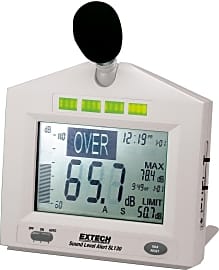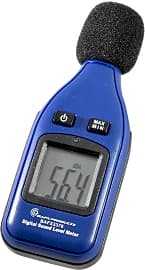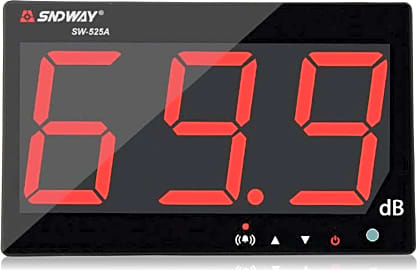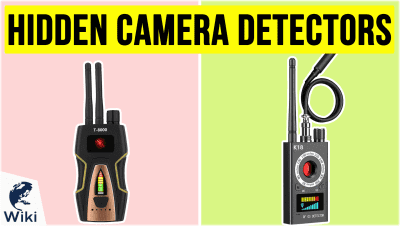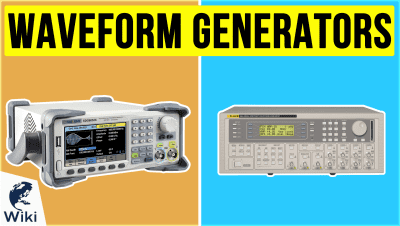The 10 Best Decibel Meters

This wiki has been updated 38 times since it was first published in January of 2016. What's that? You can't hear us over all that racket? Well, maybe you need one of these decibel meters to determine if the sound level in your space is harmful to your hearing. These handy devices are most commonly used in pollution studies, professional audio recording studios, and for the quantification of different kinds of noise, including industrial, environmental, and aeronautical. When users buy our independently chosen editorial recommendations, we may earn commissions to help fund the Wiki.
Editor's Notes
November 12, 2020:
While there weren't a lot of changes to make to this category, we did replace the Yacker Tracker Detector with the much more capable Sndway SW-525A, as the former was something of a novelty item that could serve a few limited purposes, and the latter actually offers a decent accuracy and a much more specific display. It measures in the A-weighted frequency range, which may require some explaining.
Meters like these will often have a specific frequency range sensitivity, and models that intentionally cut out frequencies outside the range of normal human hearing are said to be A-weighted, and produce results written as dBA, as opposed to the usual abbreviation for decibels, dB. For industrial applications, it's possible that ranges we can't consciously hear could still be hazardous, so it's ideal to get a model capable of measuring both, like the Reed Instruments R8050 or the Amprobe SM-10 if safety is your number one concern. And a C-weighted reading range is an absolute must in recording studios, as you want to make sure the amplifiers are hitting your microphones just right to push them to their limit without distorting.
August 21, 2019:
Availability issues sent the GoerTek and Dr. Meter models packing, and in searching out replacements, we included an excellent model from Reed Instruments that's even better than the one we included on our previous ranking. This one includes a bar graph and the ability to track up to 64,000 data points. In our number one spot you'll also see a new addition from Amprobe that's an excellent choice for use in both industrial and residential settings, with a large display and a very effective wind shield. For modern users who want the familiarity of their smartphones and don't need perfect accuracy, there's even an app in our special honors section for Android and iOS.
Special Honors
PCE Instruments 353 This model features a bright backlit display and a 0.1dB resolution. It runs on four AAA batteries and boasts an RS-232 port to interface with your PC. Its allows you to set alarm thresholds so that it will let you know if your environment becomes sonically hazardous, and its fast and slow time weighting feature expands its versatility even further. pce-instruments.com
Sound Meter Pro For users who rely on their smartphones for just about everything, this model offers an exceptional mobile interface for both Android and iOS platforms. With your phone's GPS, it can tag each saved reading with location data, but its reliance on your phone's microphone means its quality will vary from customer to customer. dbmeterpro.com
Brüel & Kjær Type 2270-S This two-channel option boasts a massive display that shows you everything from the current noise level to bar graphs detailing the range of recorded intensity over time. With the addition of available accelerometers, you can even convert it to measure vibrations inaudible to the human ear. bksv.com
Pressure Through The Air
The other half requires that we understand the scale on which these meters place their measurements.
Understanding how a decibel meter works is only half the battle when evaluating the safety of a space for human hearing. The other half requires that we understand the scale on which these meters place their measurements. The decibel scale is logarithmic rather than linear, which means its units increase by powers of ten.
For example, where 20 inches on a ruler is only twice that of 10 inches, on a logarithmic decibel scale 20dB (the shorthand for decibels) is ten times the sound intensity of 10dB – but what exactly are decibels?
We know that sound waves are vibrations in the air, and that they resonate in our ears where a complex system of bones and nerve endings translates those vibrations into the signals our brains interpret as sound. We also know that the frequency of those waves has a direct effect on their pitch.
A decibel, though, is a measure of the pressure with which a source emits sound, which bears only a minuscule impact on the sound's frequency. The meters on this list utilize microphones that are especially sensitive to pressure, and they convert that into a decibel reading.
That 10dB readout is pretty close to the threshold of human hearing (which, by the way, is 0dB). 20db is about what you'd hear from a ticking clock. A loud conversation would register around 50dB, and loud highway traffic around 80dB. From there we get into ranges that pose a threat to human hearing.
Above 85dB for at least eight hours can cause hearing damage. Above 100dB for a mere 15 minutes will do the same. Anything above 120dB, and you can suffer damage immediately. Ever been at a loud concert and actually felt pain in your ears from it? That's your body acting as a crude decibel meter, since 120dB is the threshold of pain in the ear. Bring some ear plugs next time.
Turn That Music Down
It's easy to dismiss somebody for complaining that the band is playing too loudly. He or she is just too sensitive or "getting old" (for the record, I started remarking about this when I was 15). If I'd had one of these decibel meters at the ready, I could have easily proved it.
While measuring sound levels for their potential to cause harm to human hearing is important, I would have used one of these meters slightly differently. After all, pretty much any instrument in the room would have registered as a threat to human hearing, and I spent enough nights falling asleep to a bombastic ringing in my ears to know I'll probably be deaf by the time I'm 60.
While measuring sound levels for their potential to cause harm to human hearing is important, I would have used one of these meters slightly differently.
What I wanted to quantify was more nuanced. I would have used the decibel meter to measure the specific output in different corners of the room from each individual instrument. That means I'd collect data on the vocals coming through the PA system, the guitars screeching through their half-stacks, the bass as it pumped along, and, of course, the drums.
I've heard enough bands in enough concert halls to know what the results would have been. The guitars would have registered close to 120dB, the vocals at around 110dB, the bass at roughly the same, and the drums anywhere between 100 and 120dB, depending on the quality of the kit and the force of the drummer. Recall the logarithmic explanation above to realize how broad a range of loudness this is.
Ask any audio engineer and they'll tell you that the two most important elements in a rock mix are the vocals and the drum pocket (bass drum and snare drum). If you look at the mix above, you'll see that the drums and vocals get buried behind a wall of distorted chords created by the egomaniac guitarists. It's awful for the live experience, and it's even worse for your hearing.
So, sure, you can grab one of these decibel meters to determine the safety of a given sound environment. That's what they're designed to do. But I'd encourage any musician reading this to get one into your practice space, to soundcheck with one of these meters, and to keep you stringed instruments and keys turned down below the natural levels of the drums and vocals. You'll be surprised how much better it all sounds.
Eliminate The Ear
The earliest government-sanctioned tests for the loudness of a space took place in 1929, when the New York Noise Abatement Commission gathered data on noise levels throughout New York City. These early detection and measurement methods relied on a device the technology for which came out of early telephone development, and it actually produced noise rather than taking it in to measure it.
An operator would raise the level of intensity put out by the device until it roughly matched that of the environmental sounds, judging the equivalence with his ear. Not only did this method rely heavily on the subjective senses of the individual tasked with measuring the sounds, it also added sound to the environment, inevitably muddying the discovery.
As microphone technology improved in the music industry, the sensitivity and accuracy of pressure-sensitive ribbons and diaphragms led to their incorporation into sound level pressure measurement. Still, those devices were only accurate to within several decibels, and their readouts couldn't be as specific as to display tenths of decibels as today's much more refined technology can do with ease.




